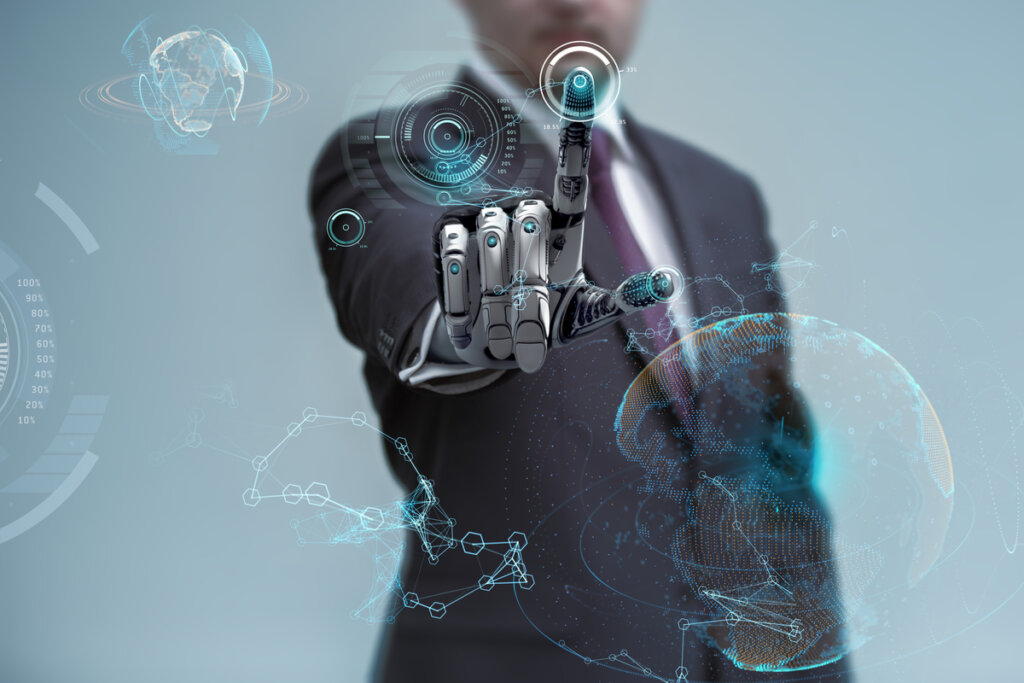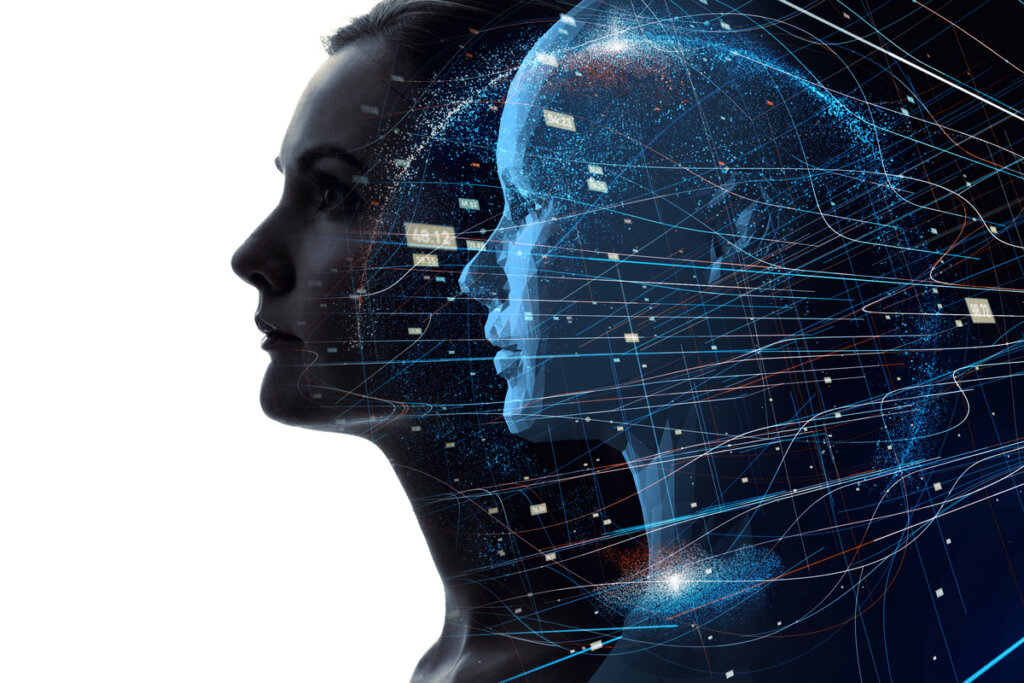The Turing Test: Differentiating Between a Human and a Machine


Written and verified by the psychologist Valeria Sabater
Can machines think? Two hundred years ago this question wouldn’t have made much sense. However, with the advance of artificial intelligence and robotics, we now see this question from another perspective. In light of this, in order to establish whether a computer or an artificial organism has reasoning capacity, scientists use the Turing test.
Alan Turing, the father of computer science, committed suicide in 1954, thought to be largely due to his conviction for homosexuality. However, he left behind the Turing test, designed to assess whether a machine was capable of showing intelligence. This interesting test, which Turing originally named the imitation game is still used today.
In 2014, a certain Eugene Goostman passed the test. Behind this apparently human name, an artificial mind was hiding. However, it wasn’t a computer. It was a chatbot, a computer program that simulates and processes human conversations.
This entity, capable of applying language processing techniques thanks to extensive access to databases, deceived almost 30 percent of the people who interacted with it. Its creators gave it the personality of a 13-year-old boy. It was curious, witty, and presented surprising conversational logic.
Alan Turing would probably have been amazed. Nevertheless, it wouldn’t have been possible without his dedication and instinctive interest in elucidating the differences between humans and machines. Let’s take a look at the test itself.
“If a machine is expected to be infallible, it cannot also be intelligent.”
– Alan Turing-

Characteristics of the Turing test
It was in 1950 that Alan Turing presented his evidence in the article, Computing Machinery and Intelligence. He commenced his work with the words “Can machines think?”. However, in reality, the term ‘think’ proved to be somewhat complex and controversial. For this reason, he reformulated the proposal and posed the question as to whether an artificial entity could demonstrate intelligent behavior.
It’s quite possible that this question wasn’t particularly relevant at the time. However, there are also other reasons for which Turing should be remembered. The first is that he was largely responsible for the deciphering of the Enigma code. This ultimately helped defeat the Nazis in World War II.
Secondly, Turing gave us solid reasons to think about the evolution of technology and its consequences. He asked if there could come a time when robots and people interacted with each other. Just like we witnessed in the movie, Blade Runner. Furthermore, how would they be differentiated from humans? Hence, he devised the Turing test, which is a scientific method that tries to define the extent to which a machine reasons like a human being.
The imitation game, the game that inspired Turing
The Turing test was inspired by a party game called the imitation game. It consisted of a man (A) and a woman (B) entering two separate rooms. The guests (C), didn’t know who was in each room and sent them questions to try to find out the gender of those people. However, the man (A) would try to make them believe that he was a woman, while the woman (B) would be sincere and would try to help C solve the mystery.
Alan Turing then extrapolated the game to another setting. He wondered what would happen if there was a machine in one of those rooms. If so, if it was asked questions, would the other participants be able to know who was human and who was an artificial entity? This is where his hypothesis began, which later took shape in the form of the famous test.
“Instead of trying to produce a program that simulates the adult mind, why not rather try to produce one that simulates the child’s? If this were then subjected to an appropriate course of adult education one would obtain the adult brain.”
-Alan Turing-
The Turing test, the human-machine conversation
The Turing test is, on the surface, quite simple. A conversation is established in natural language between a machine (A) and a person (B). However, over the years, the test has become increasingly complex. The objective is to create artificial entities capable of holding conversations that can’t be differentiated from those of humans.
The conversation lasts five minutes and must be assessed by a judge (C). The judge doesn’t know who’s in the room or behind the screen. The machine (A) will try at all times to deceive the judge and make them believe that its personality, reactions, and attitudes are entirely human.
As we mentioned earlier, in 2014, a machine managed, for the first time, to pass the Turing Test. The creators of that sophisticated chatbot were three computer scientists, Vladimir Veselov, Eugene Demchenko, and Sergey Ulasen. It managed to deceive 30 percent of the judges.

The real purpose of the test
The Turing test has been applied, reviewed, and analyzed for more than 70 years. It makes it easier for us to discover how artificial intelligence is advancing and what aspects must be fine-tuned to fool the judges, and create increasingly fine-tuned artificial minds. It’s interesting to see how these infinite details are analyzed.
Kevin Warwick, is a scientist, engineer, and professor of cybernetics at the University of Reading (UK). He conducted research that highlighted the fact that, sometimes, machines remain silent during interrogations.
The fact that, at some point, the machine decides for itself not to respond reveals a very human attitude. This would make it easier to create artificial beings more and more like ourselves and is a reminder of the true objective of Alan Turing’s test.
The purpose of the Turing test wasn’t to be able to differentiate the human from the machine. In fact, what Turing wanted to discover was if there’d come a time when machines would think as humans do. Ray Kurzweil, inventor and a figure in transhumanism, estimated that artificial intelligence would pass the Turing test by 2029. However, it happened in 2014.
All cited sources were thoroughly reviewed by our team to ensure their quality, reliability, currency, and validity. The bibliography of this article was considered reliable and of academic or scientific accuracy.
- Kevin Warwick; Huma Shah (June 2014). “Human Misidentification in Turing Tests”. Journal of Experimental and Theoretical Artificial Intelligence. 27 (2): 123–135. doi:10.1080/0952813X.2014.921734. S2CID 45773196.
- Warwick, Kevin; Shah, Huma (4 March 2017). “Taking the fifth amendment in Turing’s imitation game” (PDF). Journal of Experimental & Theoretical Artificial Intelligence. 29 (2): 287–297. Bibcode:2017JETAI..29..287W. doi:10.1080/0952813X.2015.1132273. ISSN 0952-813X. S2CID 205634569.
- Warwick, Kevin; Shah, Huma (4 March 2015). “Human misidentification in Turing tests”. Journal of Experimental & Theoretical Artificial Intelligence. 27 (2): 123–135. doi:10.1080/0952813X.2014.921734.
- D L Dowe & A R Hajek (1997), “A computational extension to the Turing Test”, Proceedings of the 4th Conference of the Australasian Cognitive Science Society, archived from the original on 28 June 2011, retrieved 21 July 2009
- Jose Hernandez-Orallo (2000), “Beyond the Turing Test”, Journal of Logic, Language and Information, 9 (4): 447–466, CiteSeerX 10.1.1.44.8943, doi:10.1023/A:1008367325700, S2CID 14481982.
This text is provided for informational purposes only and does not replace consultation with a professional. If in doubt, consult your specialist.








